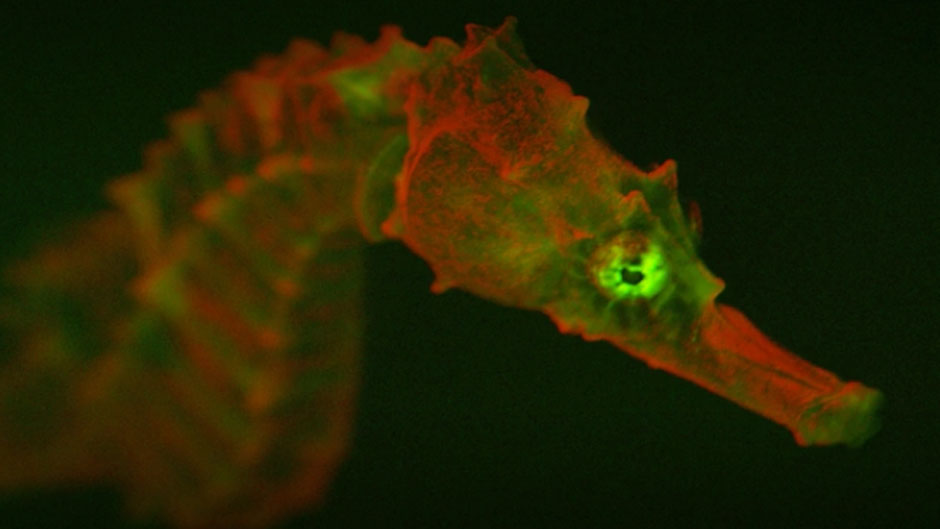In a television commercial for a hotel chain, the pitchman for a new advertising campaign describes hotel patrons who are presumably so pleased with their accommodations, they “glow” as they walk through the lobby.
“Nobody glows,’’ offers a skeptical colleague.
But it’s a different story when it comes to ocean creatures.
David Gruber, a marine biologist at City University of New York, delivered an engaging lecture Tuesday on his research into biofluorescent and biolumninescent organisms and how these underwater creatures take in deep blue light and give off a biofluorescent glow—in greens, reds and other colors.
In fact, hundreds of marine species are biofluorescent, beginning with a host of corals that Gruber has been fascinated with for years.
“I first fell in love with the biofluorenscence in corals,’’ said Gruber, the Radcliffe Fellow at Harvard University and an emerging explorer at the National Geographic Society. “I love corals. They are these animals that grow and grow. They grow on top of their dead ancestors.”
Gruber’s talk, “The Blue Ocean: Perspectives from Marine Creatures,” was the final Sea Secrets lecture this year presented by the University of Miami Rosenstiel School of Marine and Atmospheric Science.
The popular series showcases the work of scientists, academics and other thought leaders who discuss what is happening in the oceans and with ocean conservation and examine solutions to global challenges such as impacts of climate change.
Gruber’s work has taken him around the globe, and he has helped develop new ways to explore how marine life absorbs the blue light filtering through the oceans and transforms it into other colors that radiate from the organisms. He has filmed biofluorescent sharks off San Diego and recorded the first fluorescence in sea turtles.
During his studies, Gruber also developed a “shark-eye” camera to recreate how marine life view their world.
“Vision is incredibly diverse in the marine environment,’’ Gruber said.

